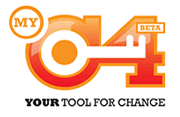I always enjoy speculating what p2p lending developments might happen in the year to come and then look back in December to see how I did. I don’t dare call it forecast, because these are just my personal guesses, though in some cases it’s an educated guess based on what I know individual p2p lending services are working on at the moment.
 More competition and entering more national markets (probability 100%)
More competition and entering more national markets (probability 100%)
This is a fairly easy bet. There are many, especially European markets, where no p2p lending service is operating yet. Even accounting for the fact that laws and regulation in some national markets make it hard or impossible to establish a service, there is still plenty of room. Looking at an individual country, it is much harder to tell. I still wonder that there are no competitors to Zopa in the British market (yet).
More products (probability 100%)
Currently nearly all p2p lending platforms only offer one product: unsecured, fixed term loans. The differences are more in the details of loan funding (bidding, no bidding, markets, listings) but not in the offered product. In 2010 we will see additional products (e.g. secured loans).
A bank will acquire an existing p2p lending service (probability <25%)
While last year’s prediction was that there is the first bank experimenting with p2p lending (and there was), 2010 might see a bank (or other financial institution) buying a running p2p lending service.
Buying will be much faster, cheaper and risk-less than if the bank tries to build a new service.


